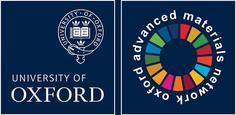A method of calculating the number and nature of rigid unit modes (RUMs) in linearly bridged framework structures is presented. Using this approach, it is shown that linearly bridged framework structures inherently possess large degrees of structural flexibility, irrespective of their connectivity (i.e., framework topology). In particular, an O (V) density of RUMs across reciprocal space is an intrinsic property of these materials. This result has implications for their guest sorption, ion diffusion, strain screening, and negative thermal expansion behavior. The RUM spectra of three representative topologies are studied: the Prussian Blue, Zn (CN)2, and extended β -quartz structure types. © 2006 The American Physical Society.
Materials by design for sustainable solutions in the energy, medical, transport, and engineering sectors




